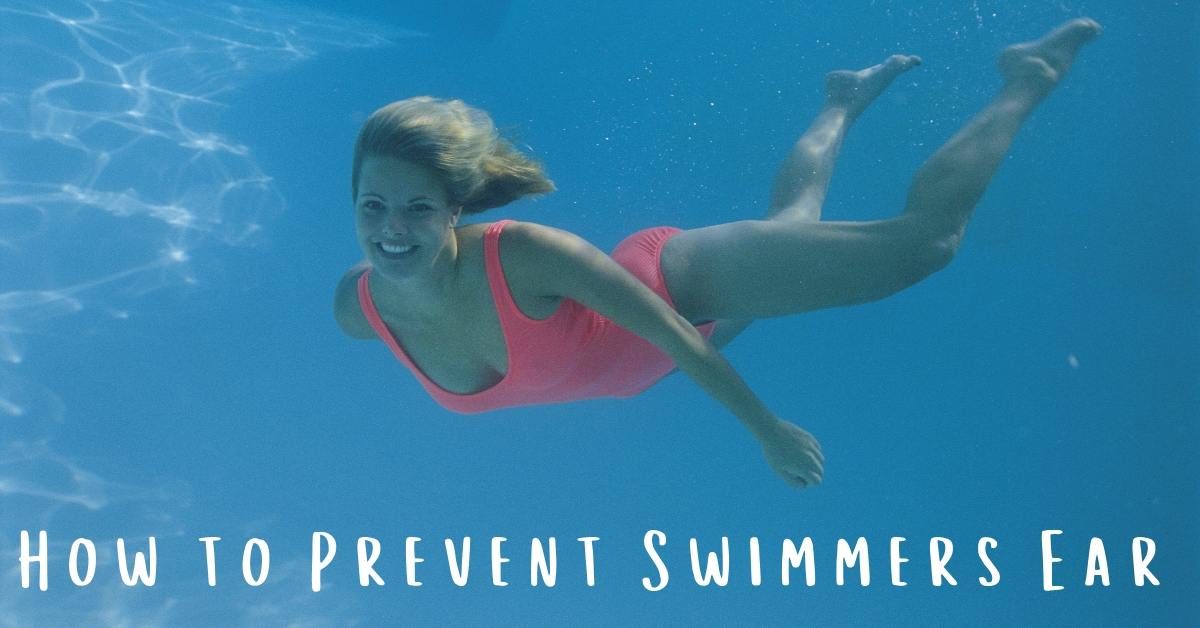Now that summer time has arrived and temperatures are heating up, no doubt you and your family are on the look out for swimming pools, lakes, rivers and beaches to beat the heat. While the water is fun and relaxing it’s important to practice proper ear care hygiene to prevent the onset of swimmer’s ear. Below we discuss more about swimmer’s ear, how to prevent this common condition, and the best swimmer’s ear treatment.
What Is Swimmer’s Ear?
Swimmer’s ear is a common ear infection that can cause discomfort in the ear canal, including itching and tenderness. Although swimmer’s ear is more common in children and young adults, you can get it at any age. And you don’t even have to be swimming. In most cases, swimmer’s ear occurs when water or moisture is trapped in the ear canal. That means you can get it from taking showers or baths, washing your hair, or being in humid environments.
Swimmer’s ear can also come from foreign debris getting trapped inside the ear, excessive ear cleaning, or contact with chemicals like hair dye or hairspray. In addition, individuals that wear earplugs, ear buds, or hearing aids may be at an increased risk of swimmer’s ear. It’s important to know the signs of this infection and what might help prevent it. What can you do to stave off swimmer’s ear this summer? The more you know about swimmers ear the more you can do to prevent it.
How to Prevent Swimmer’s Ear
- Keep ears as dry as possible. Place a shower cap over your head to help prevent water or shampoo from getting into your ears. Place a cotton ball in the ear but do not push it in far. Use a dry towel to dry your ears after bathing or swimming. Use ear plugs if you play water sports or are frequently in water.
- Turn your head from side to side after getting out of water. This helps water drain from your ears. If you do end up with water in your ears, getting the water out can prevent swimmer’s ear. Try tilting your head or pulling the earlobe in different directions. If that doesn’t work, you can also try holding a hair dryer on a low setting several inches from your ear until the ear feels dry.
- Don’t stick anything into your ear canal. This includes pens/pencils, fingers, bobby clips or cotton-tipped swabs. Cotton swabs should only be used to dry the outer ear. Extra water in the ear can also remove earwax, which makes the ear the ideal host for germs and fungi. And while earwax may seem gross, a certain amount of earwax is beneficial and actually protects you by stopping dust or other harmful objects from getting into your ear. Since earwax plays an important role in preventing infection, leave it alone.
- Don’t swim in polluted water. Remember that it’s not necessarily the water that causes swimmer’s ear — it’s the bacteria. Excess water in the ear keeps the ear moist, which makes it the perfect place for these germs and bacteria to stay and grow.
- Use a simple, homemade solution to help prevent bacteria from growing inside the ear. Mix one drop of vinegar with one drop of isopropyl (rubbing) alcohol and put one drop in each ear after bathing or swimming. Be sure to check with your doctor first before making and using this homemade solution.
Visit Your Doctor
Before proceeding with any swimmer’s ear treatment, be sure to get an accurate diagnosis from a trusted healthcare professional. A doctor will usually clean the outer ear canal before prescribing eardrops for swimmer’s ear. An antibiotic, steroid, acidic solution or anti-fungal medication may also be prescribed, and a pain reliever such as ibuprofen or acetaminophen may be suggested to reduce discomfort. If initial treatments are not effective, oral antibiotics might be prescribed. If you’re still in pain, try placing a warm compress or towel on your ear.
HearCare Rhode Island
At HearCare Rhode Island, we want you to enjoy the glorious summer and your swims as safely as possible. Contact us to learn more about our swimmers plugs and other custom ear protection options.

